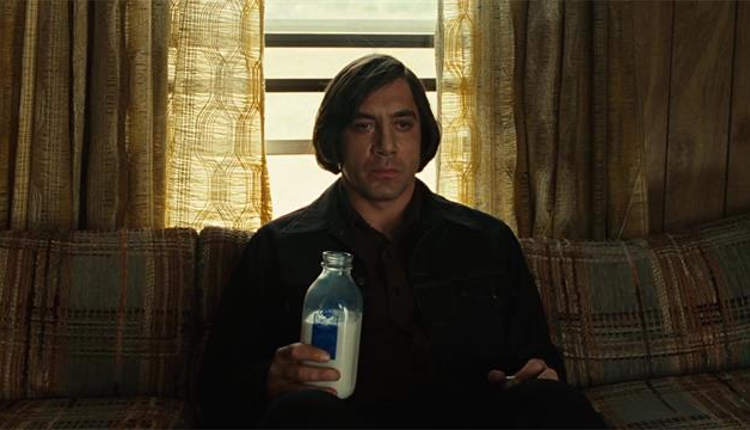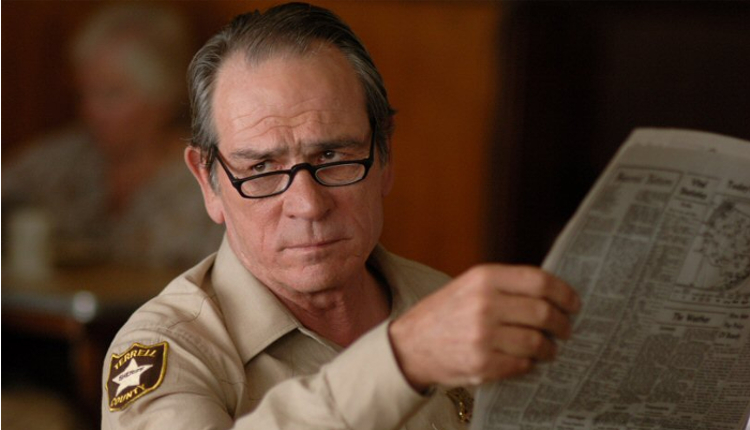You Can’t Stop What’s Coming | No Country for Old Men At 10
The criminal mind is something we’ve endeavoured to understand, explain, and control ever since the first cave man hit his friend over the head with a bit of wood. Over the years, behaviour has gotten easier to explain to those that catch criminals and those who are fascinated by them. The likes of Mindhunter and Criminal Minds appeal to those of us fascinated by explanations of how the killer’s brain works. But there are exceptions to every rule. No Country for Old Men never explains its reasons only points out that the criminal mind is still something we barely understand and can never control.
No Country for Old Men is the Coen Brothers’ most successful film. Nominated for eight Oscars it won four for Best Film, Best Director(s), Best Adapted Screenplay for the Coens and Best Supporting Actor for Javier Bardem. It is continually recognised as one of the best films of the twenty-first Century and it inspired thousands of copycats and homages. Without it Taylor Sheridan would not have written tour-de-forces like Sicario, Hell or High Water and Wind River. No Country for Old Men resurrected the neo-western. It’s also my favourite film, just so you know.

It begins with two murders. Arrested for unknown reasons Anton Chigurh (Javier Bardem) strangles a deputy with his handcuffs before stealing his police cruiser. He then pulls over a man and, using a cattle gun, kills him and switches cars. There is no real rhyme or reason to this opening sequence. We don’t know who Chigurh is or why he’s been arrested. His actions follow no logical path. Chigurh’s reasoning is his own and the film never explains it because it can’t, and it shouldn’t. The instant we see his rictus grin as blood spurts in an uneven spray around the cuffs we know that this is a man we shouldn’t want to understand.
Compared to Chigurh the rest of the cast’s reasonings are clear. Llewelyn Moss (Josh Brolin) wants the money for him and his sweet, innocent wife Carla Jean (Kelly Macdonald). Sherriff Ed Tom Bell (Tommy Lee Jones) wants all this to clear up nicely so he can retire in peace. Carson Welles (Woody Harrelson) wants the money so he can get paid. The nameless Mexicans of the film want their money and their drugs back. When the Coen Brothers direct and write a drama it rarely ends well for any of their characters especially in No Country for Old Men.
No Country for Old Men is a very graphic film. There are more violent films, but few linger on the effects of their violence as this does. Moss is shot at the beginning of the film and the shotgun wound stays with him for the remainder. The devastating wounds made by Anton Chigurh’s silenced shotgun are never hidden. In one scene Chigurh is himself wounded and clinically cleans, empties, and sutures the wound in a motel room. Going back to the strangled deputy at the film’s beginning and his statement of “I got it under control” seconds before he is killed presents a despairing image of violence. The man willing to kill wherever and whenever is in control for even though we see Chigurh bleed he never truly appears human.

An early scene sees Moss escape gunmen by crossing a river. The film cuts to a roadside station manned by a friendly old-timer. Instead of Moss seeking help as we expect in comes Anton Chigurh with his shit haircut and glassy eyes. A chilling back-and-forth occurs, a coin is flipped and Chigurh leaves. The gas station attendant is alive and will probably lock that memory away forever. This scene does little to advance the story it only sets in stone the dread we feel whenever Chigurh comes into frame. There is a similar scene in Zodiac, also released in 2007, in which Robert Graysmith (Jake Gyllenhaal) interviews a possible Zodiac suspect in a dark basement. Nothing story-related occurs in this scene but we move on feeling very much the worse for wear over what transpires.
There is no happy ending for anyone in No Country for Old Men. Moss is killed by the cartel he originally stole from. Carson Welles is killed by Chigurh for interfering. Not even Chigurh wins in the normal sense of winning. His morally skewed code might be satisfied but he has killed his employers and numerous innocents, Carla Jean being the most tragic of all these deaths. As for Sherriff Bell? He retires just like he wanted to. He claims he feels “over-matched” and confused by the violence. He is an old lawman stuck in a time he doesn’t understand. He is just not clever or quick enough to grasp at what’s going on in this place he feels he used to understand. At the end the best he can do is escape rather than continue to fight.
There is good in the world of the Coen Brothers’ films. Whether it be Raising Arizona, Fargo or Hail Caesar there is good in these films. There is nothing good left by the end of No Country for Old Men. Nearly all the good characters are dead and the only one to survive retires. The Coen Brothers and their collaborators, in particular the masterful cinematographer Roger Deakins, paint a vivid picture of a cruel, unfair and mean-spirited world. There is no justice here because there never was any to begin with. The violence we see in the film has come and gone before.
The cruelty of men and the world they live in has been photographed and pressed onto film reel ever since the first action film The Great Train Robbery in 1903 but No Country for Old Men is both the final totem and lament to this cruelty. Great black clouds loom in the distance as Moss hunts in the film’s second scene. Thunderheads roll in foreshadowing the coming storm. But that storm has come and gone before. It will come again and there isn’t a thing that can be done about it.

